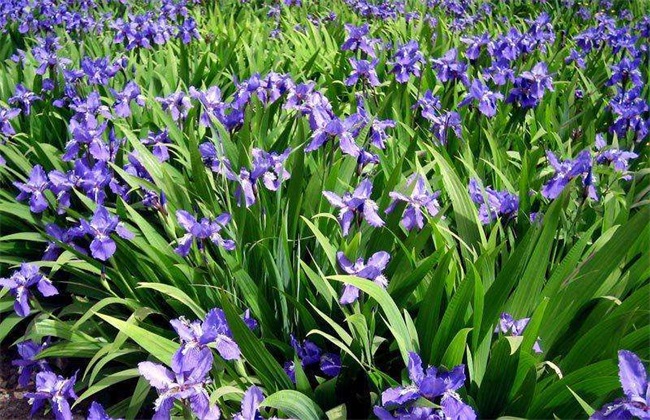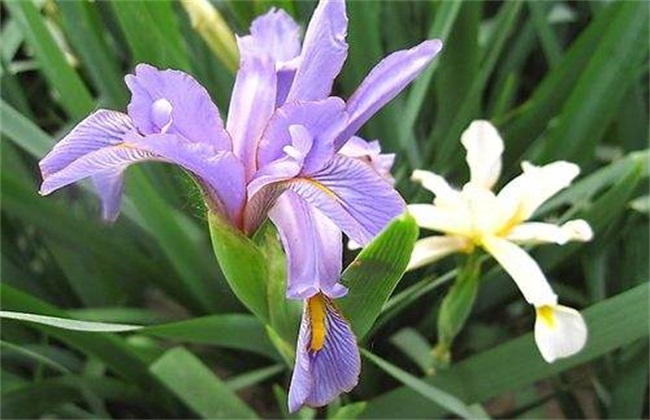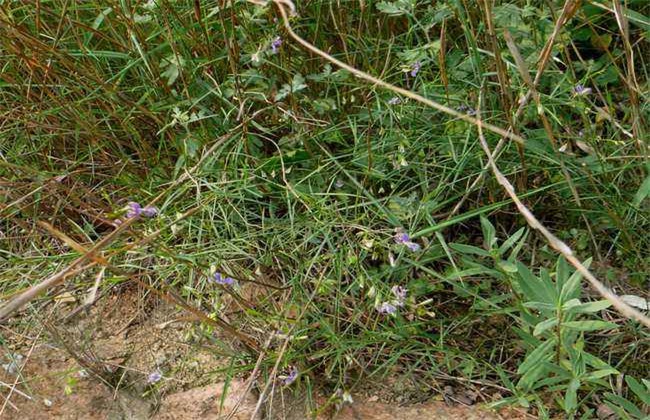Key points of cultivation techniques of Iris
Iris is not only a perennial herb of Iridaceae, but also a common flower in China, which has a very wide distribution in the middle and south of China. Iris not only has a very high ornamental value, the rhizome can also be used for anti-inflammation, but also can be prepared into perfume, the economic value is very high. So how to grow irises? The following editor brings you the key points of the cultivation techniques of Iris, let's have a look!

1. Soil selection
Iris can be planted in many ways, not only in greenhouse, but also in open field. In fact, the growth ability of Iris is relatively strong, in general, it can be planted in most soil. It is not enough to ensure a good soil structure, such as good drainage and irrigation, strong water and fertilizer conservation capacity and not easy to consolidate, which are the basic conditions for long-term large-scale planting of Iris. Before planting, we can add an appropriate amount of peat, coarse sand and other substances to improve the soil and promote the growth of Iris.
2. Methods of reproduction
Iris blossoms in spring every year, and the flowering time is about 3 times. The ramet or sowing method is generally used in May, and the ramet can also be carried out in autumn and after planting for about 3 years. When we cut the rhizome, we should ensure that each rhizome has at least two adventitious buds to improve the rooting and germination rate. If sowing is used to propagate, then the iris seeds should be sown in time after they mature. It takes at least two years for the seedlings to bloom. When planting, the row spacing is controlled at about 50 cm, and the planting depth is 7 cm to ensure the growth of the seedlings.
3. Water and fertilizer management
When planting irises, we should pay attention to control the amount of water and keep the soil moist. Planting plots should ensure a good drainage and irrigation system so that they can be easily drained during the rainy season or when stagnant water is generated. Iris is different from other crops, so it is not suitable to apply base fertilizer before planting, because it is easy to increase the salinity of the soil and reduce the growth rate of the root of Iris. Before topdressing, we should test the soil formula to find out the lack of nutrition in the soil, so as to supplement nutrition when topdressing. It should be noted that we should avoid using fertilizers containing fluorine when fertilizing, otherwise it will easily lead to the death of Iris.
4. Disease control
Disease control is an indispensable management measure when planting Iris. The common diseases of Iris are ball rot, crown rot and so on. We should strengthen the management when planting, control the temperature and humidity in the field, and disinfect the seeds and bulbs before planting. Reduce the base number of pathogens in the garden to ensure the normal growth of Iris. When the abnormal situation of iris occurs, the cause must be found out in time, and then the corresponding chemicals and treatment methods should be used for prevention and control, so as to reduce the damaged area and reduce the loss.
The above is a brief introduction to the key points of Iris cultivation techniques. In fact, the cultivation of Iris is relatively simple, in cultivation, do a good job of basic management, you will be able to make Iris grow normally. That's all for today's introduction. This article is for reference only. I hope it can help you all.
Related
- Fuxing push coffee new agricultural production and marketing class: lack of small-scale processing plants
- Jujube rice field leisure farm deep ploughing Yilan for five years to create a space for organic food and play
- Nongyu Farm-A trial of organic papaya for brave women with advanced technology
- Four points for attention in the prevention and control of diseases and insect pests of edible fungi
- How to add nutrient solution to Edible Fungi
- Is there any good way to control edible fungus mites?
- Open Inoculation Technology of Edible Fungi
- Is there any clever way to use fertilizer for edible fungus in winter?
- What agents are used to kill the pathogens of edible fungi in the mushroom shed?
- Rapid drying of Edible Fungi



